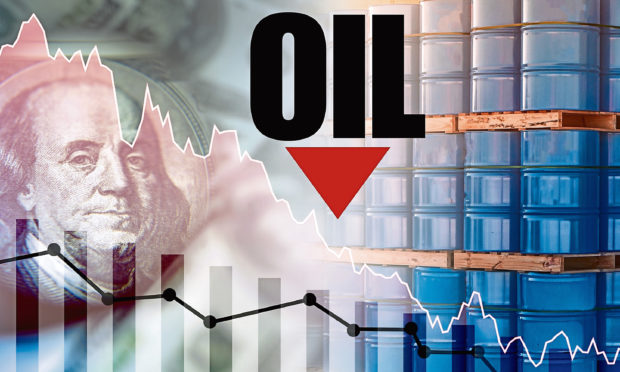Oil prices plunged to an 18-year low yesterday as hopes of a production pact between Saudi Arabia and Russia faded.
Benchmark Brent crude fell to $22.58 a barrel in early trading but later clawed back some of its losses to sit just above $26 as London markets closed.
A combination of an oil price war between Saudi Arabia and Russia, and the Covid-19 pandemic – which has caused a collapse in demand as an estimated 1.7 billion people are forced to stay at home, while also grounding most of the aviation industy – has sent prices crashing.
Keith Myers, head of research at market research and intelligence firm Westwood Global Energy Group, warned the downturn may be prolonged.
He added: “Uncertainty remains over its duration and depth. Brent is trading in the $20s per barrel (bbl) – well below its equilibrium trading range of $40-80/bbl, established since 2016, while global oil demand grew annually 1-2 million barrels a day and demand growth was being met mainly by US unconventional oil.
“The Covid-19 pandemic is having a catastrophic impact on oil demand. How long the travel bans and lockdowns that are driving the fall in demand continue is anyone’s guess, but it seems likely to be many months.”
Mr Myers said Saudi Arabia and Russia’s fall-out over oil production rates had pushed more supply into the market at “just the wrong time”.
He added: “A reconciliation will not be enough to reverse the fall in demand caused by the response to Covid-19.
“History suggests oil markets should recover. The timing and pace of recovery will depend primarily on the progress of the pandemic, the lifting of lockdowns and the pace at which the supply side responds with cuts.
“In the meantime, however, exploration and production companies, rig owners and service firms are back in survival mode.
“The corporate failure rate could be higher than in 2015-16 if the financial markets are less forgiving, which is possible.”
